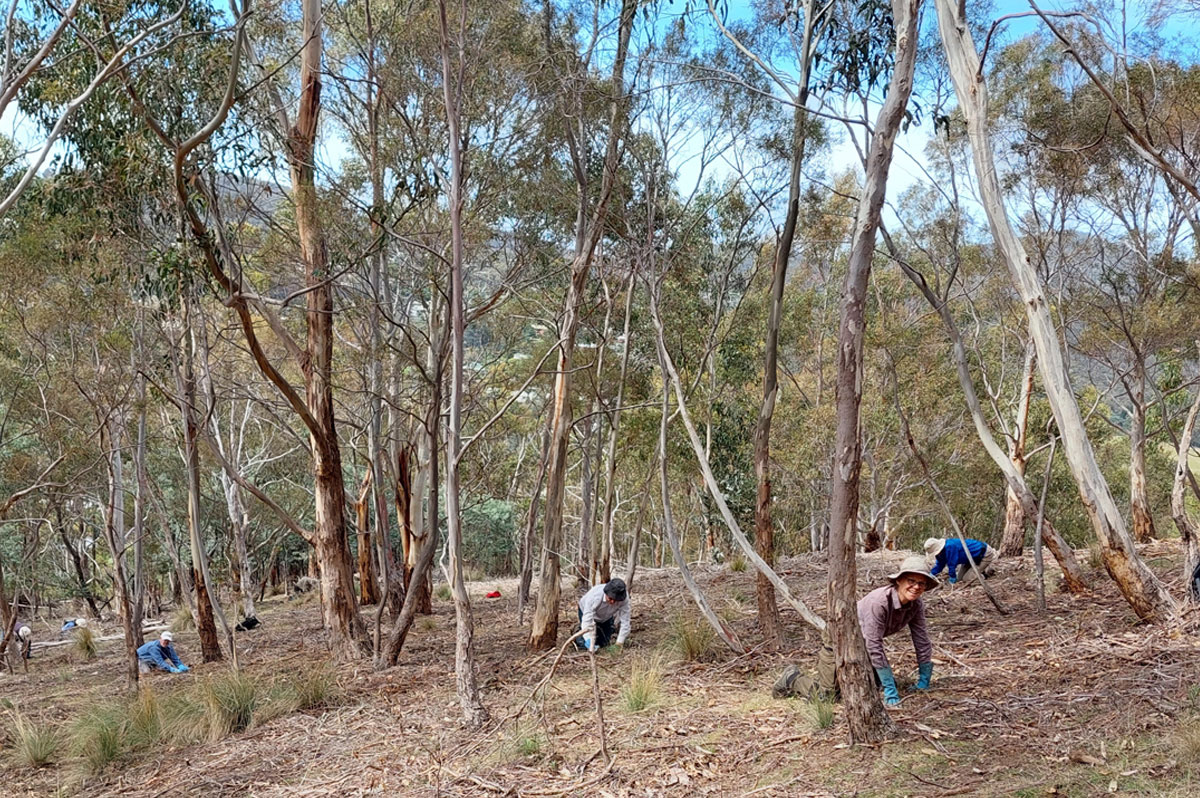
Every year over 700 people take part in one or more of our City of Hobart Bushcare working bees.
On any given weekend we can be running up to five separate events, with volunteers cutting out woody weeds, hand-pulling weeds or planting native trees and shrubs.
Our volunteers might be working high up on the eastern face of Kunanyi/Mt Wellington, in the woodland grasslands of the Queens Domain, or down on the Hobart Rivulet, protecting and improving platypus habitat.
Think big picture
Sonya Stallbaum has been in the environmental field for more than three decades and as one of our Bushcare team leaders understands the need to find a balance between the threats to our environment with methods that will achieve positive outcomes for nature and volunteers.
“Sometimes, when faced with a wall of weeds, we can feel overwhelmed,” she says.
“But that feeling can be useful, it prompts us to step back and come up with a plan. Best practice management is about protecting the healthiest environments as a priority, moving from best to worst.
“The most effective approach might be to leave those weeds for now and remove threats from intact local native vegetation.”
30 years of Bushcare
Sonya says three decades of Bushcare grunt has made a huge difference to Hobart’s natural values.
“Looking after the environment is a slow and steady process and much of the positive impacts made by Bushcare go unnoticed, but we all know we make a difference,” she says.
“The bushland around Mt Nelson, on the whole, is in amazing condition, with biodiversity values arguably the best you can get for a capital city, or even a small town.
“The same goes for the slopes of Lambert Gully in Sandy Bay and up into Bicentennial Park.
“Our Lambert Gully Bushcare volunteers had been slogging away for 15 years to get on top of the woody weeds that escaped local gardens into nearby bushland, and another ten years bringing the invasion of red hot poker under control.
“These are extraordinary achievements by a small band of Bushcare volunteers plugging away year after year, and they’re not done yet. Blue periwinkle, another garden escapee, is the new weedy threat to Lambert Gully.”

Bushcare volunteers searching for environmental weeds in Knocklofty Reserve.
Eyes on the ground
When a fast spreading weed surfaces in Hobart’s bushland parks and reserves it’s often our Bushcare volunteers who first sound the alarm. They are our eyes on the ground.
“The amount of weed disasters averted by the hands of Bushcare volunteers is a big factor in the preservation of our natural values,” says Sonya.
“Gorse, one of our worst environmental weeds, once covered Knocklofty Reserve. In some places it was so thick it formed impenetrable walls.
“Now Knocklofty is largely weed-free, thanks to persistent work over three decades by the Friends of Knocklofty. It’s an extraordinary achievement really.
“Of course, the threat remains, with gorse seed remaining viable for up to 80 years, but ongoing monitoring will keep Knocklofty Reserve safe from weed reinvasion.”
People, part of nature
Sonya believes there is a sense in the community that the natural areas that make Hobart such a special place are self-sustaining, but that idea couldn’t be further from the truth.
“Bushcare people know that the health of urban bushland depends on active intervention to maintain a positive balance of natural values,” she says.
“When you are out and about, enjoy our gorgeous bushland and take pride in the fact that so many people in Hobart give up their valuable weekend time to help keep it healthy.”
Join Bushcare!
If you would like to get involved in the City of Hobart Bushcare program sign up for our Bushcare email updates and grab a copy of our latest working bee program.
Learn more